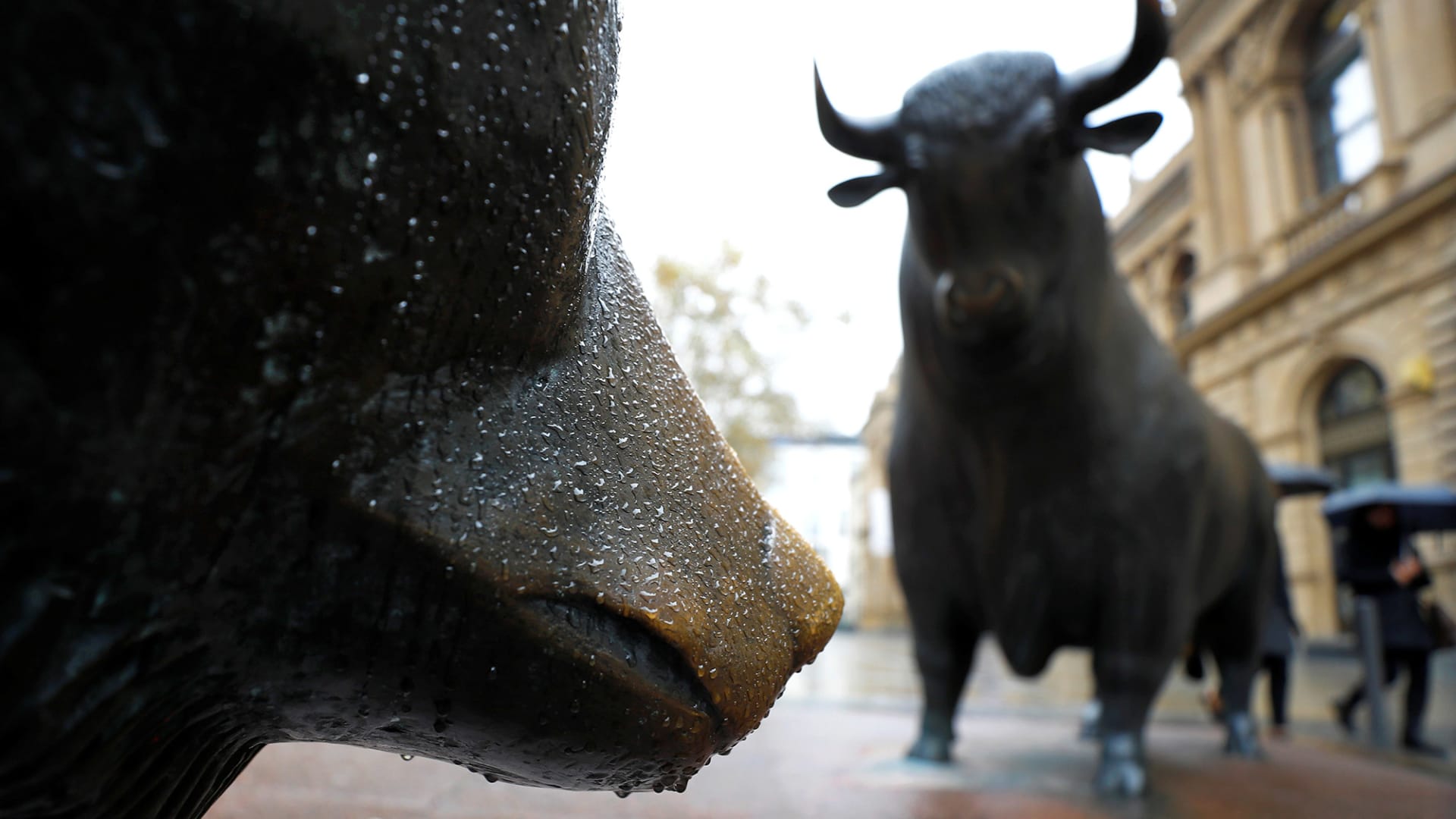The S & P 500 this week took out its mid-June low, a level many investors were hoping would hold as the bear market bottom. The Dow Jones Industrial Average also closed in bear market territory on Monday for the first time since the early days of Covid in 2020, finally joining the S & P 500 and the Nasdaq there. Now what? First, let’s get our definitions straight. A close 20% or more below a recent high is considered a bear market for a specific stock or index. The current bear market in the S & P 500 was triggered on June 16 when the index closed more than 20% below its prior peak, which was a closing record on Jan. 3. That previous high then becomes the starting point of the bear market. So the current bear market started in early January and won’t be considered over until the S & P 500 closes 20% or more above its bear market low, which can only be determined in hindsight. However, that doesn’t keep Wall Street from speculating about when a bottom might occur or when it might have already occurred. For a while, that June 16 low was looking like a good candidate for a bottom. But Monday and Tuesday, the S & P 500 closed lower, setting new bear market lows each day. Notably, the term “rolling bear market” has also been one we have heard in recent years. It describes a market in which various components are experiencing their own declines of 20% or more, even though the overall index manages to hold up. By the way, who decided that 20% was the threshold anyway? We don’t have an answer for you, except that it’s the arbitrary number designated for the term bear market — just as a 10% or greater decline from a prior high is reserved for a correction in a stock or index. Bear markets past Historically, S & P 500 bear markets have lasted, on average, 370 days with an index decline of roughly 36% from peak to trough, according to our compilation of research. Some recent extreme examples of bear markets include the dot-com bubble burst of 2000, which led to a bear market of about 2½ years and saw the index fall nearly 50%; the 2007-2009 global financial crisis, which coincided with a bear market that lasted just under 1½ years and saw the index collapse over 50%; and the Covid pandemic, which saw a bear market of just over a month and the index fall by a third. Importantly, though there’s often a link, not all bear markets coincide with recessions. For example, in 1987, the crash referred to as Black Monday was neither the cause of, nor did it lead to, a recession. And while the economy did then go into a recession from late 1990 to early 1991, the stock market didn’t enter another bear market until the aforementioned dot-com bubble popped nearly a decade later. Today’s bear market In the current bear market in the S & P 500, now nearly 270 days old, stocks are under pressure as a result of the Federal Reserve and other central banks around the world raising interest rates, Russia’s ongoing war in Ukraine, and the economic implications of China’s zero-Covid policy. The S & P 500 has dropped about 24% from its all-time high on Jan. 4. But we don’t think that the current macroeconomic challenges imply declines as deep and long-lasting as in the prior bear market scenarios mentioned, especially considering the resiliency we see in the labor market at the moment. We are inclined to think that, though there may still be some more pain ahead, the worst is likely behind us. Investing in a bear market There are various options for how different sorts of people can play a bear market like the one we find ourselves in. These fall into roughly three camps: traders, passive investors and long-term investors like us. The trader On one end of the spectrum, you might approach this market with the mindset of an active trader and bet to the downside, or short stocks, and get out of stocks completely. (At the Club, we only buy stocks long, betting they will go up, and always look to stay invested. Our small cash position might go up or down depending on market conditions and other factors.) With the market already down over 20%, a trader in that position would have to be betting that the economic outlook is about to worsen materially. It’s certainly possible: Russia could escalate its war in Ukraine; tensions between China and the U.S. over Taiwan could accelerate; and/or Fed rate hikes could plunge us into a deep recession. The issue with going this route, though, is the risk of correctly timing the turnaround. A trader might get out of the market and save some downside, but will they be able to get back in in time? Very few can pull off this kind of timing successfully, and even fewer can do so consistently. Moreover, we think a trader would be bailing on great companies at the best valuations we have seen in years, all to get back into them, hopefully, at just slightly lower prices. It’s also worth keeping in mind that, at the individual stock level, many great companies have already declined far more than that average 36% bear market drawdown we cited earlier. The passive investor At the other extreme, there’s the totally passive investor, who may simply want to keep up with whatever contributions they were already putting into their 401(k), for example, or maybe even increase them given the decline. This investor knows that markets go up and down — though, generally in a positive direction on a long enough timeline — and they’ve decided not to factor in the daily, weekly or even yearly fluctuations. It’s not as risky for mutual- and index fund-type investors. But with a hands-off approach, the risk is higher if individual stocks are owned because companies can go out of business. The Investing Club approach Then, there are those somewhere in the middle, where we fall, who are active investors seeking to take advantage of short- or medium-term bouts of volatility in an attempt to enhance longer-term gains. While we may look to manage around a core position, buying when stocks appear oversold and selling at relative strength, we’re not trying to day trade. At a high level, our approach is the same as it has always been — to buy shares in the beaten down stocks of what we believe to be high-quality companies. We don’t like to hop in and out, and we don’t seek out buys simply based on the passing of time as one might with a 401(k) contribution every two weeks. Rather, we look to manage each position independently in the context of a diversified portfolio, focusing on individual stock valuations in an attempt to suck money out of the market in the near term , while maintaining long-term exposure. We attempt to be granular in our approach, adding to positions when the buys can help lower our overall cost basis — ideally, always snagging shares at a cheaper level than we have in the past — and peeling shares off on relative strength when positions grow a bit too large, on swift moves up in an overbought market, or simply when we need to rebuild our cash coffers. Still, one shift in our strategy during this bear market could be to more quickly raise cash on the up days, knowing those seeking to trade the market are going to be in “sell-the-rip” mode. Conversely, we might also be slower to step in on the declines, understanding that we are no longer in “buy the dip” mode. And given the headwinds the economy faces, we may also be more inclined to target those companies that can better weather a slowdown. Bottom line But as painful as it may be right now, the one thing history tells us is what always follows a bear market is a bull market. Being mindful of this and incorporating our understanding of previous bear markets, we are still aiming to exploit short-to-medium-term weakness in order to maximize longer-term gains. In the long run, stocks will reflect company fundamentals. While some earnings power may be taking a near-term hit due to macroeconomic pressure, we are targeting those companies in which we believe that earnings will bounce back and eclipse prior levels when macro headwinds abate. In the words of the late investor Shelby Davis, “You make most of your money in a bear market, you just don’t realize it at the time.” (See here for a full list of the stocks in Jim Cramer’s Charitable Trust.) As a subscriber to the CNBC Investing Club with Jim Cramer, you will receive a trade alert before Jim makes a trade. Jim waits 45 minutes after sending a trade alert before buying or selling a stock in his charitable trust’s portfolio. If Jim has talked about a stock on CNBC TV, he waits 72 hours after issuing the trade alert before executing the trade. THE ABOVE INVESTING CLUB INFORMATION IS SUBJECT TO OUR TERMS AND CONDITIONS AND PRIVACY POLICY , TOGETHER WITH OUR DISCLAIMER . NO FIDUCIARY OBLIGATION OR DUTY EXISTS, OR IS CREATED, BY VIRTUE OF YOUR RECEIPT OF ANY INFORMATION PROVIDED IN CONNECTION WITH THE INVESTING CLUB. NO SPECIFIC OUTCOME OR PROFIT IS GUARANTEED.
People with umbrellas pass by bull and bear outside Frankfurt’s stock exchange during heavy rain in Frankfurt, Germany.
Kai Pfaffenbach | Reuters
The S&P 500 this week took out its mid-June low, a level many investors were hoping would hold as the bear market bottom. The Dow Jones Industrial Average also closed in bear market territory on Monday for the first time since the early days of Covid in 2020, finally joining the S&P 500 and the Nasdaq there. Now what?


























































![Mason Ramsey – Twang [Official Music Video] Mason Ramsey – Twang [Official Music Video]](https://i.ytimg.com/vi/xwe8F_AhLY0/maxresdefault.jpg)




















